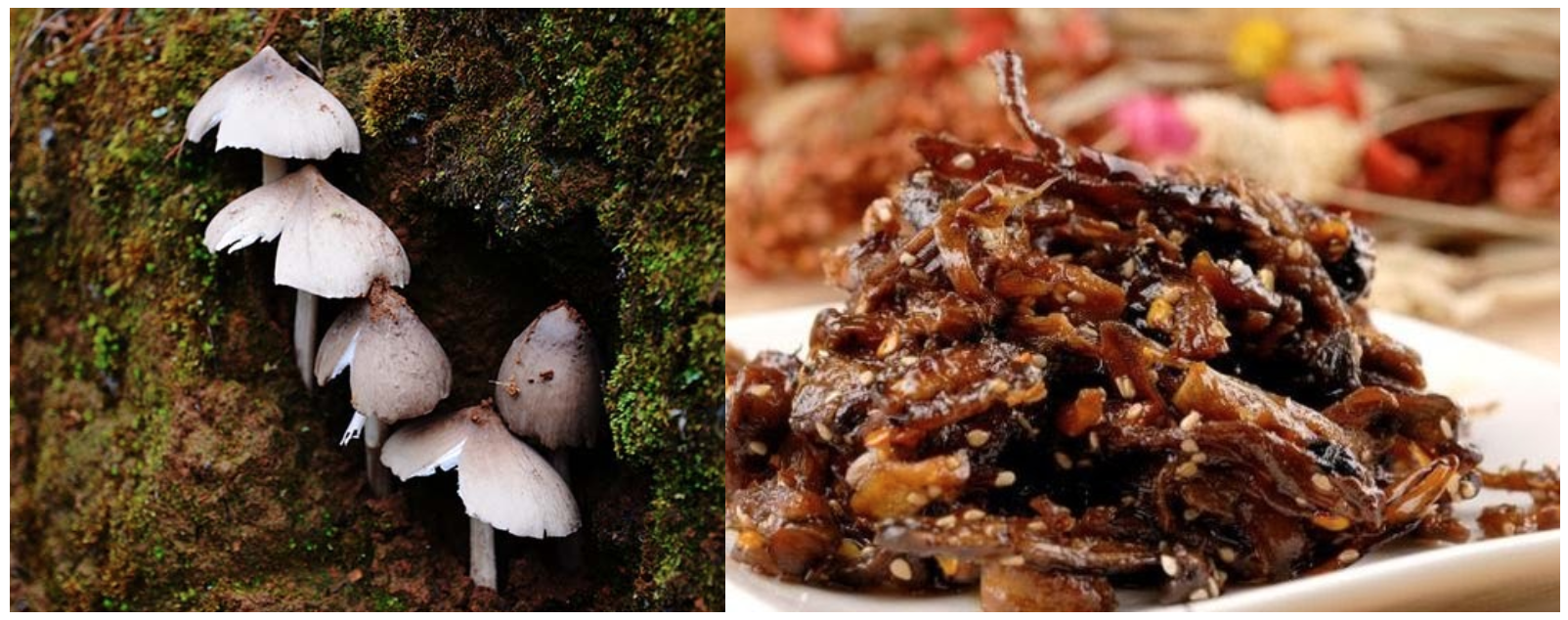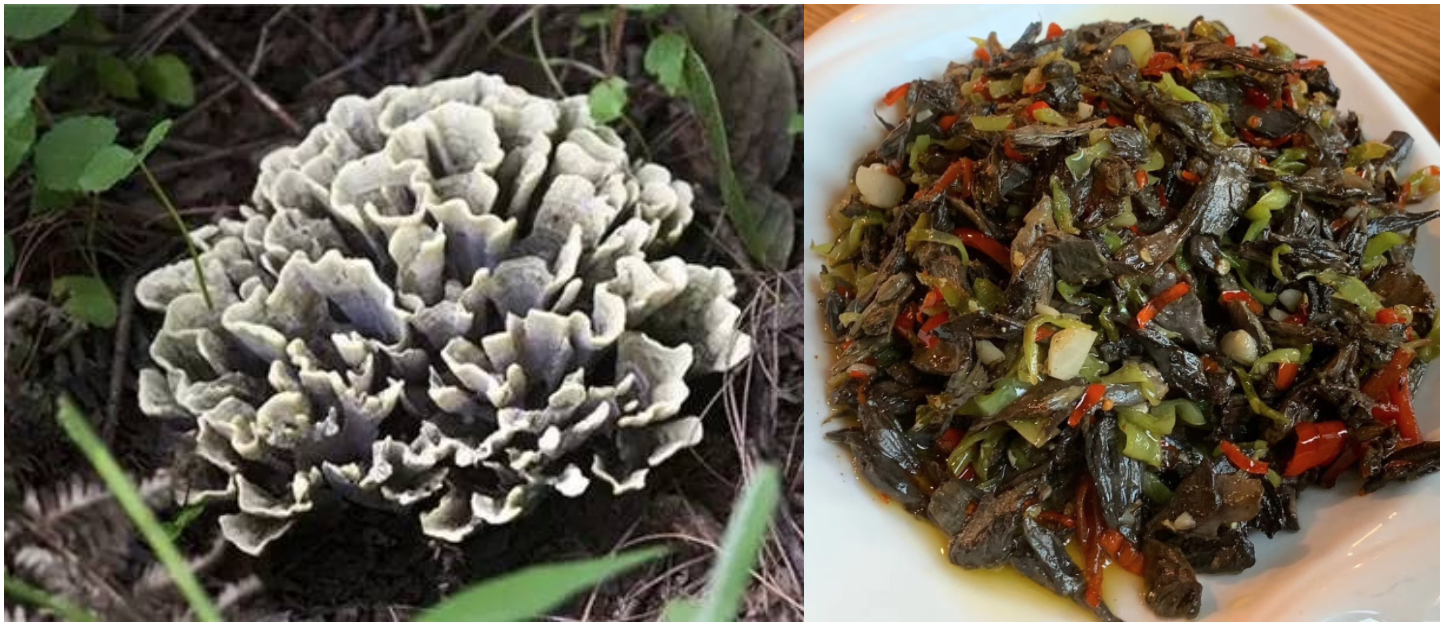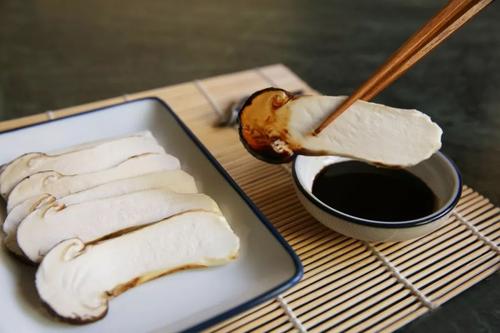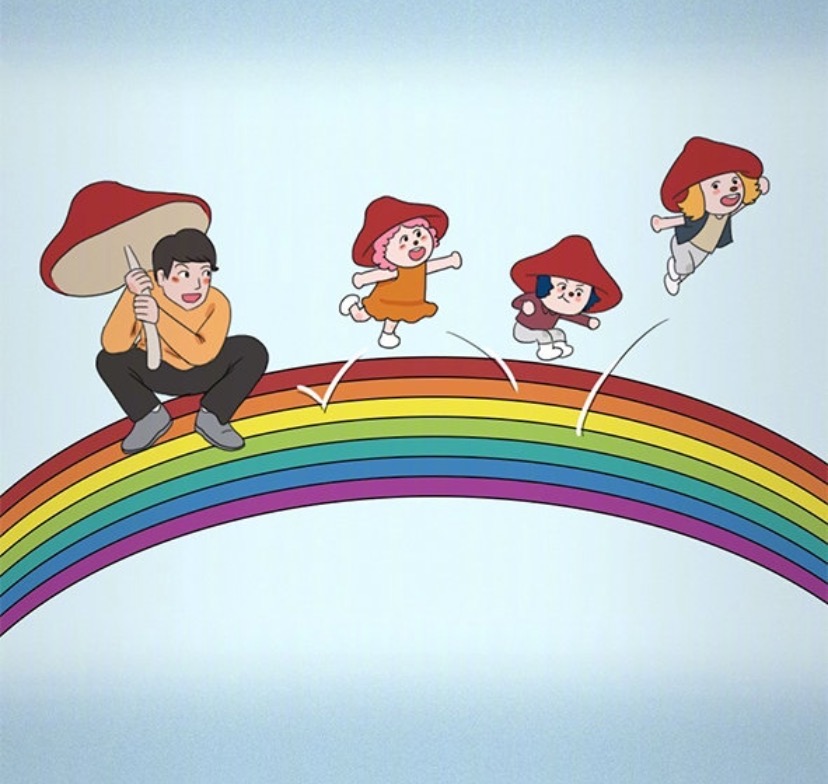The beginning of summer means different things for different people. For some, it means shedding off thick sweaters and bringing out the tank tops. For others, it means making that first splash in the pool on a hot sunny day. For the people of Yunnan province, the beginning of summer means reuniting with their beloved wild mushrooms.
Yunnan sits in the southwest corner of China and is marked by its mountainous terrain. Every year in late June, Yunnan hits its rainy season. Heavy rainfalls over green mountains give birth to a savory miracle that the locals call “菌子” (jùn zi, otherwise known as wild mushrooms). The people of Yunnan also lovingly refer to them as “菌儿” (jùn er, pronounced by locals as jièr).
In order to obtain these treats, junzi pickers get up at dawn to scavenge the mountains. Freshness is key, and mushrooms picked in the morning are brought down the mountains and into the markets by early afternoon. If you find yourself in one of these markets, here are a few kinds of wild mushrooms you will see:
1. 鸡枞(jī zōng) The Tianqi Emperor of the Ming Dynasty considered this his favorite type of junzi. 鸡枞 gets its name from its raw texture, which is considered to be like that of fresh chicken. Hence, the character “鸡” (jī, for chicken) in its name. This type of junzi can be stir-fried to a crisp and stored for up to a year, soaked in its own oil. Fresh 鸡枞 can also be steamed with battered eggs for a refreshing dish that people of all ages enjoy.
The Tianqi Emperor of the Ming Dynasty considered this his favorite type of junzi. 鸡枞 gets its name from its raw texture, which is considered to be like that of fresh chicken. Hence, the character “鸡” (jī, for chicken) in its name. This type of junzi can be stir-fried to a crisp and stored for up to a year, soaked in its own oil. Fresh 鸡枞 can also be steamed with battered eggs for a refreshing dish that people of all ages enjoy.
2. 见手青 (jiàn shǒu qīng)
The name translates into “turns green when exposed to touch,” which is pretty self-explanatory. The mushroom starts out a yellowish shade but immediately turns green when touched or exposed to the air. It sounds quite magical, but the color change is actually a sign of its poisonous nature. 见手青 is considered one of the most dangerous types of junzi people eat. Not to worry, high heat is the key to removing its poison.
3. 干巴菌 (gān bā jùn)
 This mushroom is known for its ugly appearance. But not only is it ugly to look at, it is also an absolute hassle to deal with. Because it grows in an entirely natural environment, dirt and pine needles get stuck inside its folds. The mushroom is completely made up of creases and wrinkles, the perfect hiding spot for dirt. You have to take a knife and slowly scrape out the soil, crease by crease. Then you have to carefully remove the pine needles without breaking the mushroom itself. And that’s just the first two steps! While preparing the mushroom, you will catch a whiff of its intoxicating aroma. Luckily, cooking it is quite simple. You simply stir-fry it and add a bit of salt. One bite and you will know it was all worth it.
This mushroom is known for its ugly appearance. But not only is it ugly to look at, it is also an absolute hassle to deal with. Because it grows in an entirely natural environment, dirt and pine needles get stuck inside its folds. The mushroom is completely made up of creases and wrinkles, the perfect hiding spot for dirt. You have to take a knife and slowly scrape out the soil, crease by crease. Then you have to carefully remove the pine needles without breaking the mushroom itself. And that’s just the first two steps! While preparing the mushroom, you will catch a whiff of its intoxicating aroma. Luckily, cooking it is quite simple. You simply stir-fry it and add a bit of salt. One bite and you will know it was all worth it.
4. 松茸 (sōng róng)
 Known as “the king of all wild mushrooms,” 松茸 is well sought after by people in China as well as Japan. This type of mushroom is extremely picky about its environment, but the mountains of Yunnan seem to suit its demands. When cooking, people are careful not to disturb its original taste. The easiest way is to cut them into slices and eat them raw, like pieces of sashimi. You can also boil them in a rich soup, or grill them without adding any condiments. Their flavor alone is enough to leave people drooling.
Known as “the king of all wild mushrooms,” 松茸 is well sought after by people in China as well as Japan. This type of mushroom is extremely picky about its environment, but the mountains of Yunnan seem to suit its demands. When cooking, people are careful not to disturb its original taste. The easiest way is to cut them into slices and eat them raw, like pieces of sashimi. You can also boil them in a rich soup, or grill them without adding any condiments. Their flavor alone is enough to leave people drooling.
CAUTION! The “wild” part isn’t there for nothing. Most of these mushrooms are naturally poisonous. If handled incorrectly, they can cause more than just stomachaches. Mushroom poisoning can lead to anything from hallucinations to life-threatening hospital runs. Many people say they hallucinate about seeing little people dancing in front them. Some also see themselves walking on a rainbow. 
(a cartoon of a wild-mushroom hallucination)
It’s said that almost every Yunnan local has gotten mushroom poisoning at least once in their lifetime. Despite this, the addictive flavor keeps everyone coming back for more. Yunnan people know they can’t tame this kind of 山珍(shān zhēn, “treasure in the mountains”) and they never try to. For them, artificially grown mushrooms have nothing on these wild delights. So, when eating this dangerous yet worthy dish, here are a few tips to keep in mind:
- Start slow. A local must-try dish is wild mushroom hotpot. It features a pot filled with many different kinds of junzi. But a tip for first-timers is not to eat too many different kinds all at once. And of course, you should limit your quantity if you are trying this for the first time.
- No microwaving. Heat is key to “breaking the poisonous spell.” So even if you are eating mushrooms that have already been cooked, you have to throw them in the frying pan and cook them all over again. The microwave is definitely not your friend when it comes to reheating wild mushrooms.
- Have patience and high heat. When cooking wild mushrooms from scratch, you need to pour enough oil into the frying pan to almost submerge the mushrooms. Keep frying until you see the oil turn from clear to murky, and then from murky to clear again. Only then can you be sure that your mushrooms are safe to eat. Then you can take out your mushrooms, put them in a new pan with peppers or garlic etc., and cook them to the flavor you like.
- Only eat what is offered in the market. Are all wild mushrooms in the mountains of Yunnan edible? Of course not. People who go mushroom picking are either very experienced or they’re amateurs planning a trip to the emergency room. So unless a hospital trip is on your calendar, I suggest you leave the mushroom picking to the pros and just buy what is offered to you.
So if you ever find yourself in the streets of Yunnan during these hot months, don’t forget to try one of these savory delights! Happy summer!
[zombify_post]


0 Comments